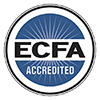By Dr. Don Bierle, FaithSearch President
Then Pilate took Jesus and scourged Him. And the soldiers wove a crown of thorns and put it on His head, and arrayed Him in a purple robe…Jesus therefore came out, wearing the crown of thorns and the purple robe. And Pilate said to them, “Behold the Man!” (John 19:1,2,5 [Emphasis added]).
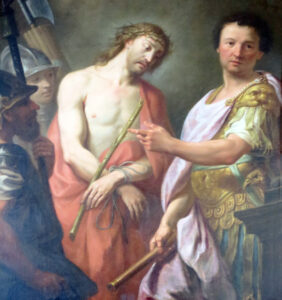
Christmas is in the rearview mirror and the headlights barely reveal the coming Easter celebration. But archaeology is already helping to illuminate some interesting details about the trial and crucifixion of Jesus.
In 35 BC, Herod the Great built the Antonia Fortress to protect Jerusalem’s vulnerability to attack from the north. This palace or citadel was placed at the northwest corner of the Temple mount. Its towers stood 115 feet high with underground passageways that gave access to the city and the mount. Its footprint was more than the size of a football field, plus additional surrounding area. It served as headquarters for the Roman army in Jerusalem. At times, Roman Governors would stay there during visits.
The Biblical Significance of the Antonia Fortress
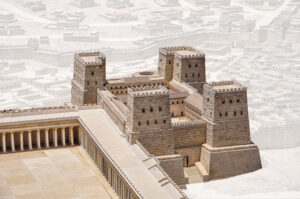
According to the traditional view, the Antonia Fortress is likely the place of one of the most important events in history: where Pontius Pilate tried the Lord and ultimately sentenced Him to death. In the Gospels, the place of Jesus’ trial is referred to as the Praetorium (John 18:28, 33). Later it was also referred to as the “Barracks” (Acts 21:37, 40).
Near the Antonia Fortress there was a large paved area which served as a courtyard. The Gospel of John refers to it as the “Pavement”:
“When Pilate therefore heard that saying, he brought Jesus out and sat down in the judgment seat in a place called the Pavement, but in Hebrew, Gabbatha” (John 19:13 [Emphasisadded).
Here the Roman Governor was known to perform troop reviews and where soldiers would keep watch over prisoners awaiting sentence. This is likely where Jesus was held. (Alternatively, it is possible Jesus was judged at the Herodian palace and fortress on the west side of the city.1)
A Fatal Game the Soldiers Played
Carved on the Pavement flagstones which have been preserved to this day, at least four ancient “board games” have been observed. One in particular is relevant to the way the Gospels describe Jesus’ treatment by the soldiers.
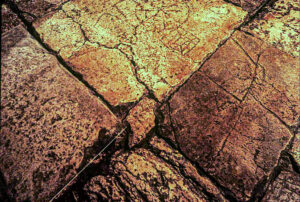
Basileus or Basilicus (a.k.a. the Game of the Kings) was derived out of the Saturnalian worship festival where a scapegoat was selected by lot. It would always fall on the prisoner. In the Roman army’s version of Basilicus, the winner of each round of the game would get to choose different ways to torture the prisoner in the guards’ collective charge. This included dressing the prisoner up as a king and in turn mocking and abusing the victim, prior to the ultimate act of execution. The game helped to de-sensitize Roman soldiers to the cruelty of crucifixion.
This well-known ancient game explains how the Lord was treated as described in the Gospel of Matthew (27:27-31):
Then the soldiers led Him away into the hall called Praetorium, and they called together the whole garrison. And they clothed Him with purple; and they twisted a crown of thorns, put it on His head, and began to salute Him, “Hail, King of the Jews!” Then they struck Him on the head with a reed and spat on Him; and bowing the knee, they worshiped Him. And when they had mocked Him, they took the purple off Him, put His own clothes on Him, and led Him out to crucify Him (Matthew 27: 27-31).
As is often the case with new archaeology discoveries, the facts discovered by archaeologists line up with the biblical account. The irony is that the soldiers were totally unaware that when they made Jesus the scapegoat, they were fulfilling Scripture which proclaimed that Jesus was indeed the “Lamb” who was to die to take away the sins of the world (John 1:29).
Ecce Homo
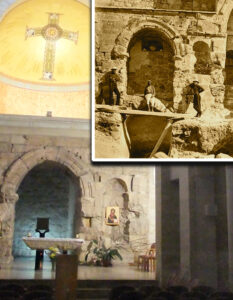
Today, the Sisters of Zion Convent is built atop the place where the fortress once existed. Back in 1858-1862, the order built the “Ecce Homo” Basilica (church) on the site, which is Latin for “Behold the Man.” In the basement beyond the Struthion Pool, where the ground level is the same as in the first century, you can still observe portions of the pavement and some of the flagstones with the carved soldiers’ game. In the way which only God could orchestrate, it serves as a memorial to the One whom John the apostle wrote about, who at the hands of pagan soldiers accomplished His Father’s will to redeem mankind.
In the beginning was the Word, and the Word was with God, and the Word was God…And the Word became flesh, and dwelt among us, and we beheld His glory, glory as of the only begotten from the Father, full or grace and truth” (John 1:1, 14).
Sources: “The Praetorium (Antonia Fortress) – Jerusalem – Israel,” Christian Evidences Ministry (ChristianEvidences.org)
1 “Tour Showcases Remains of Herod’s Jerusalem Palace—Possible Site of the Trial of Jesus,” Bible and Archaeology News, Biblical Archaeology Review, Robin Ngo, July 21, 2022



